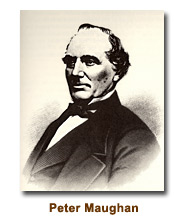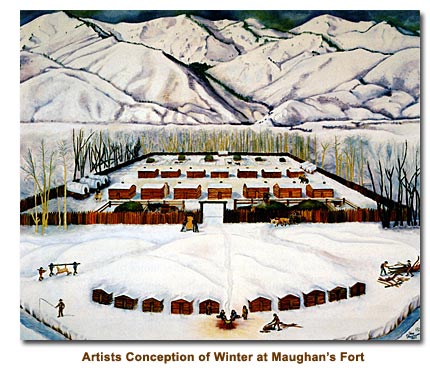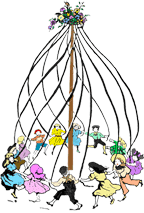First Settlement at Maughan’s Fort (Wellsville)
Like the early states of New England, but unlike the growth of the states and territories later, Utah grew up from a number of colonies sent out from time to time, both north and south, by Brigham Young and his council, the First Presidency and the “Twelve,” to form settlements and people the intermountain country. The colonists were placed under able and experienced captains whom Brigham Young deemed the most fitting men to be the founders of the communities and to formulate the local governments. Hence the settlements and counties of the territory, at the outset, grew up rather in the organic form of colonies and family groups of settlements than as cities or towns in the ordinary sense. The government was semi-patriarchal and communistic, the settlements being many social branches of one general church community. These captains of the colonists became bishops and presidents of stakes, and in that character they founded the cities and counties of Utah.
In 1856, Peter Maughan was chosen by Brigham Young to take a small colony into Cache Valley and commence the settlement of it. Peter Maughan, his son William H. Maughan, George Bryan, John Tate, Morgan Morgan and Zial Riggs arrived in Cache Valley over the Sardine route in July 1856. They were much impressed with the Valley and decided to locate in the south end where Wellsville is. They returned at once to Tooele County for their families. September 15th, 1856, the following arrived in Cache Valley and became the first real settlers and colonizers here: Peter Maughan, his wife and sons, William H. Maughan and John Maughan, Zial Riggs, George Bryan, Francis Gunnell, Orange D. Thompson and families. For two days they explored the Valley and finally decided to locate where Wellsville is. They went to work cutting wild hay and building their log houses and corrals.
September 27th of this year, the first child was born in Cache Valley to, Mrs. Peter Maughan. It was named Elizabeth. This event took palace in a covered wagon just after the first snowfall, September 26th. It was cold weather and the settlers moved into their log cabins just as soon as they were completed. The settlement was called Maughan’s Fort but later was named Wellsville in honor of Lieutenant Daniel H. Wells.
The winter of 1856 was also a severe one for the settlers. The snow was so deep that trenches had to be dug to the woodpiles where one log was dug up at a time and used for the fires. Trenches were also dug around the haystacks to keep the cattle off the stacks.
The snow was from three to four feet on the level and about ten feet deep in the canyons. In January of 1857, John Gardner, son of William Gardner, attempted to reach Maughan’s Fort (Wellsville) from Brigham City through the canyon. He was frozen to death and was found two days later about one-half mile from the fort. This caused great alarm in the little colony and William H. Maughan and John Maughan made two trips on snow shoes over the Sardine trail to Brigham City to forward a letter to their father, Peter Maughan, then at Fillmore, to inform him of Gardner’s death; also to arrange to meet their father at Brigham City and escort him to the Fort in Cache Valley. In the spring of 1857, the settlers began to fence their farms and plant their crops. Other colonists arrived so that when the provisional organization of the county was effected there were about twenty families. Among those to arrive were William Hamblin, Timothy Parkinson, Sr., Thomas Leavitt and Joseph Woodward.
